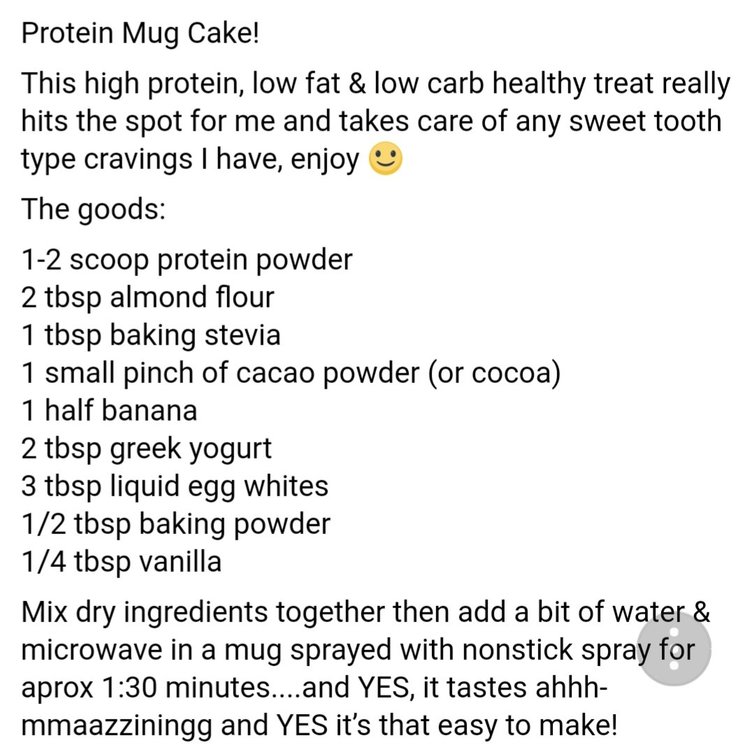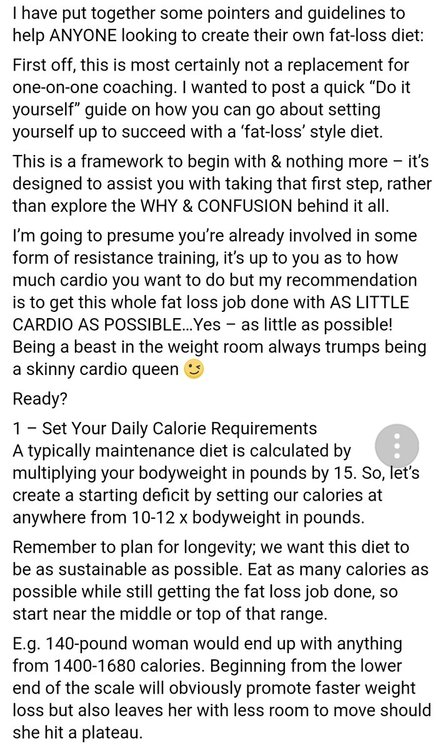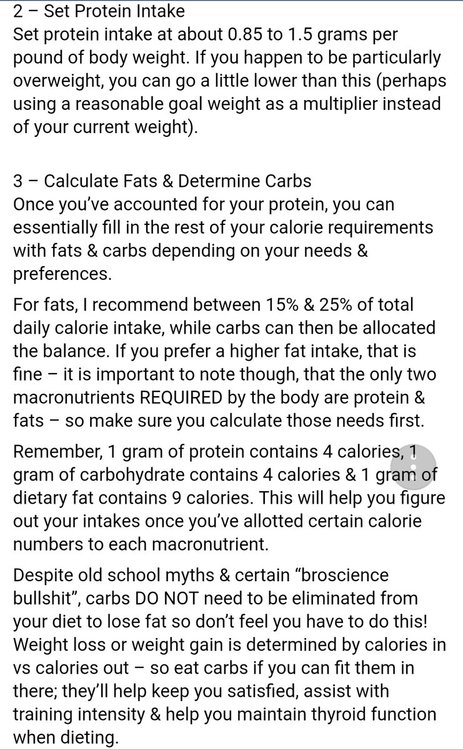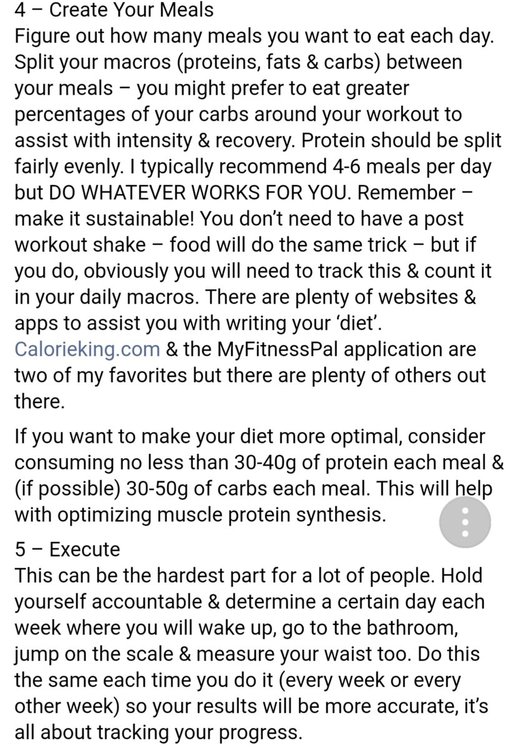-
Posts
912 -
Joined
-
Last visited
-
Days Won
71
Everything posted by musclebeauty
-
Welcome aboard ?
-
Welcome aboard ?
-
Welcome aboard?
-
Yes I actually have wrote a lot of good info on the site to
-
Hey mikey glad you made it over you will love this site
-
Humans evolved millions of years ago in a much different environment than our own. The so-called Paleo diet takes its name from the Paleolithic period, which began when humans first started to use stone tools. The theory behind the diet is that our modern pattern of food consumption contributes to obesity and chronic disease. By altering our eating habits to more closely resemble those of Paleolithic humans, we achieve weight loss and better health. The Paleo Diet Philosophy Although the broad concepts behind the diet emerged in the 1970s, public awareness of the Paleo diet took off after Dr. Loren Cordain published his 2002 book, “The Paleo Diet.” Now, millions of people adhere to Paleo principles when choosing the foods they eat. The premise behind the Paleo diet (or "caveman diet") emerged from anthropological studies suggesting that our hunter-gatherer ancestors had much lower incidence of cardiovascular disease, obesity, and other chronic health problems. Our genetic makeup is nearly unchanged from Paleolithic times, but our surroundings have been completely transformed. Modern agriculture has led to high intake of cereal grains, starchy fruits and vegetables, and factory farmed meats. Paleo adherents argue that by minimizing these modern food groups and emphasizing the foods available to our pre-agricultural ancestors, we can achieve better health. Core Concepts of the Caveman Diet Proponents of the Paleo diet suggest that we must dramatically alter our pattern of food intake to become similar to hunter-gatherers (O’Keefe & Cordain, 2004). This includes: Increasing protein intake. Hunter-gatherers lived in a world where wild game was a significant portion of their diets, when available. The Paleo diet considers animal products to be a staple. Diet adherents are encouraged to eat grass-fed beef, chicken, seafood, and other animal products. Decreasing carbohydrate intake. Not all carbohydrates are equally bad under the Paleo diet. However, starchy foods that have a high glycemic index – meaning that they trigger spikes in blood sugars – must be avoided. Non-starchy fruits and vegetables, including berries, apples, watermelon, peaches, plums, zucchini, broccoli, spinach, and eggplant are acceptable Paleo foods. Increase fiber consumption. Dietary fiber reduces levels of “bad” LDL cholesterol and decreases cardiovascular risk (Brown et al., 1999). Under the Paleo diet, it is important to get dietary fiber from non-starchy vegetables instead of the whole grains suggested by other diet plans. Moderately high fat intake. Fat has gotten a bad rap in our modern world. In fact, some forms of fat are beneficial for health and decrease risk of chronic disease. The Paleo diet emphasizes the importance of polyunsaturated and monounsaturated fats. Nuts and seeds make excellent Paleo snacks. These foods are good sources of healthy omega-3 fatty acids. Paleo adherents also believe that moderate amounts of saturated fats, which are often found in animal products, do not significantly increase risk of disease. Reduce sodium intake. The modern American diet includes high levels of sodium because of the prevalence of processed foods. Paleolithic bodies were much more accustomed to receiving higher doses of potassium but lower amounts of sodium. Almonds, leafy green vegetables, and bananas are good sources of potassium. Promote alkaline food consumption. Once foods are digested, some are acidic while others are alkaline (basic pH). Eating too much alkaline food can affect kidney and bone health. Thus, it is important to reduce cheese, legumes, and dairy products, which are alkaline foods. Eat plant phytochemicals. Fruits and vegetables are natural sources of vitamins, minerals, and other beneficial nutrients. These include phytochemicals with antioxidant effects, meaning that they boost cellular health and fight off disease. Eating across the color spectrum of fruits and vegetables is an important part of a Paleo diet. Scientific Research Supporting the Paleo Diet Some scientists agree that the use of the Paleo diet for weight loss and health. For example, a study by researchers at the University of California-San Francisco School of Medicine had participants eat their regular diet for three days before spending 10 days on the Paleo diet (Frassetto et al., 2009). They found that even this relatively short time on the diet resulted in lower blood pressure, reduced plasma insulin, and lower cholesterol levels. More research is needed to expand upon these findings and determine whether the Paleo diet works well for the general population. Criticisms of the Paleo Diet The Paleo diet is not without its criticisms. Some doctors worry that the diet could lead to calcium deficiency, contributing to osteoporosis (Pitt, 2016). Others simply believe that the premise behind the diet is flawed. Our Paleolithic ancestors had a much shorter life expectancy and may also have experienced chronic disease (Jabr, 2013). Furthermore, eating whole-grain foods that are banned under the Paleo diet may actually improve overall health. If you are interested in the Paleo diet, approach it with a cautious eye to keep yourself safe and healthy.
-
Wow looking damn good?
-
Your looking great and abs coming in nicely
-
Welcome aboard ?
-
Welcome aboard ?
-
Welcome aboard ?
-
Welcome aboard ?
-
Welcome aboard ?
-
Welcome and glad to have another woman onboard?
-
Welcome aboard glad to have you
-
Its really damn good ?
-
Thanks girl yeah really leaning out nicely now....
-
Thankyou very much hun
-
-
Info i found and good shit to know..... Time between DNP runs for recovery? I swear I've looked just about everywhere and can't find any info. It sounds like once it leaves your system after 5-7 days, you want to wait a few weeks for the thyroid to recover? I'm curous if there's a difference between 21 day low dose (250-ish) cycles VS 8-10 day high-dose (500-ish) for recovery as well. If you need to run that many DNP cycles back to back there are more important issues at hand like diet and training.... But to answer your question I have read online that 6 months between cycles is ideal to ensure there is no issue with your PNS, also the more you take it the less effective it will be for additional cycles. lnTheRearWithTheGear • Jul 31, 2015, 9:46 PM Everything I read here says that it's literally impossible to develop a tolerance to DNP. herman_gill • Aug 1, 2015, 8:21 AM Low dose DNP (so the week and a half after your last pill) is actually a decent hormetic agent, and promotes mitochondrial biogenesis, the same way that mild caloric restriction can possibly do that. This might even partially explain why a week after people stop taking DNP, they feel like they have all this energy. So you won't necessarily "build a tolerance" but if you have more mitochondial density, your body can adapt to uncoupling more, and you won't necessarily get as many sides from it. Important things to note: things that are good for your health/mitohcondrial health/electrolyte balance probably wouldn't be bad ancillaries to take if you're absolutely deciding on taking DNP. That includes Carnitine, Taurine, CoQ10, methylcobalamin (might prevent the peripheral neuropathy to a degree). None of them would "hinder" the effects of DNP, but they'd probably do a lot to protect your body from all the negative acute/long term complications of DNP use. Also important to note: mitochondrial uncoupling starts at as low as 30mg of DNP, and it's half life is estimated at like 36 hours... so If you were taking 500mg/day towards the end of your cycle (stable dose of 1350mg according to this), it would take 197 hours (8 days) before you actually stop the mitochondrial uncoupling. I personally wouldn't ever advise someone take DNP, because the prevalence of some potential problems in the population isn't that rare, like mild carnitine transferase or other carnitine deficiencies, a decent amount of the population are carriers (and 1 functioning gene is totally fine, but 2 might be better), or any sort of underlying illness. Obviously people who are weight training are less likely to have those problems anyway (because of a self-selection bias, weaker/slower people with shitty genetics are less likely to successful become big and lean and get this involved into certain communities), but there's obviously intrapersonal variance there, and if 100 guys take DNP it might exacerbate any underlying long term conditions in the future for at least a few of them, and renal/cardio effects are amongst the worst common effects of electrolyte disturbances, and those are amongst the top 5 killers in old age anyway. The same is true of AAS use and cardio stuff too (and also hepatic), which has been well documented. Interestingly enough DNP might actually be beneficial for hepatic function in low sustained doses (fights fatty liver). But that's in verylow doses, like just slightly above the 30mg levels in the blood. The safest (least bad) dose to take DNP if you absolutely would, would be a lower dose with healthy breaks in between, enough so that you can get the hormetic action of it, without overloading your system. A clear sign you're overdoing DNP is when you start to experience side effects associated with DNP (shortness of breath, lethargy, hyperthermia). That's the DNP overcoming your body's regulatory mechanisms. But if you take 250mg even once, and you don't start immediately breaking out in sweat, it doesn't mean that it's not working, it means that your BMR has gone up and your body is able to adapt to it without fucking up too bad. You still lose the weight (above the 30mg threshold effect anyway), and you don't absolutely destroy your body in the process in the short term. Interestingly enough, if you took a 750mg bolus at the start of the week, and didn't take any at the end of the week, you'd end up with 30mg in your blood at the end of the week (use this to figure that out) assuming the half life is actually 36 hours. If you split the dose and went 250/250 Day 1, Day 2 (407.491 on that day), and then nothing for the rest of the week, you'd end up with 25mg at the end of the week. <--- The 250/250/off/off/off/off/off is probably the least dangerous way to take DNP, with the concentration being the highest (and you experiencing the most sides) on Day 2. But people don't take DNP to lose weight slowly and progressively, most of them take it because they want results NOW, and the guys that are asking about what to do for their 3rd or 4th run on forums like this aren't often NPC pros, they're usually the guys who can't get their diet and training in order in the first place, and hopped on a cycle and started taking DNP instead of learning to bulk and cut, and actually getting a solid base in the first place. I should probably write a post on this eventually. Not the last part, but about DNP and harm reduction.
- 1 reply
-
- 1
-

-
Thankyou shredzs the shit works alright
-
Last day for my final dose of BT DNP and im already looking forward to my next cycle of it...160 today wow cant believe how much i have dropped...
-
Just a little video of me doing triceps with a 70lb dumbbell 20180925_234135_1.mp4





_7898.thumb.jpeg.1e252dcc1e5b70a53e4af5a7610085cb.jpeg)








